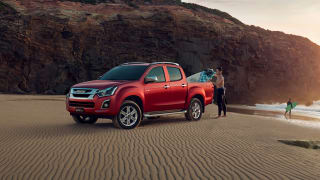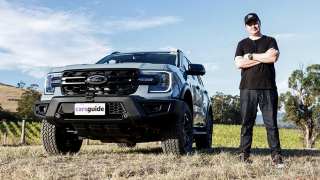As always, we tested with a heavy payload; in this case 770kg in the load tub, which, with a 100kg driver, was about 120kg short of its 3040kg GVM rating. With the tyres inflated to the maximum pressures shown on the placard (32psi front/44psi rear) the rear suspension displayed its big wheel travel by compressing a full 80mm - yet with plenty of bump-stop clearance - while the front rose 15mm.
Although you could feel the extra weight, the TDI420’s acceleration, steering and braking response remained largely unaffected, while the suspension soaked up bumps with ease over a variety of sealed and unsealed roads.
It easily coped with our 2.0km, 13-per-cent gradient set climb at 60km/h in fourth gear at 2500rpm. It also displayed impressive engine braking on the way down, restraining its big payload at 60km/h in a manually selected second gear at 4000rpm on over-run, with no use of the brake pedal. That was impressive retardation, given the engine’s small capacity.
The Amarok is still the most car-like of all the dual-cab utes, with performance, handling, ride composure and comfort in TDI420 form that belies its considerable bulk and height, whether it’s empty or heavily loaded. The rear leaf springs provide an excellent compromise between supple ride quality when empty and robust load support when full.
The twin-turbo engine and eight-speed auto work well together in city and suburban traffic, providing spirited acceleration from standing starts and good mid-range punch. On the highway, the engine ticks over at a leisurely 1750rpm at 100km/h in top gear. Those revs only increase to 1900rpm at 110km/h, providing good economy and relaxed cruising. Cabin noise levels are impressively low at these speeds, too.
















